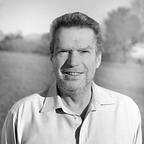Collaborate by design
“We’re all fragile threads, but what a tapestry we make” (Jerry Ellis)
Mahatma Gandhi suggested that one of the greatest challenges of our day is finding unity amongst diversity. Unity implies oneness, but oneness does not necessarily mean sameness. In other words, we may all be different, unique individuals, but through unity of purpose we can team together synergistically to accomplish great tasks where “the whole is greater than the sum of its parts” (Stephen R Covey: 7 Habits of Highly Effective People).
Jack Jacobs tells the story of how they transformed their manufacturing plant into an environment that facilitated collaboration:
“We had made substantial steps forward in terms of improving customer service, a key element of our new vision. We improved our percentage of on-time and complete shipments from fifty percent to ninety-nine percent, even though fifty percent is pretty much standard on our industry. Our success not only helped our customers, but it also helped demonstrate that we were on track. Unfortunately, although improving our delivery percentages so dramatically was a huge win for us, it also suddenly left us open to renewed complacency. The question was: What do we do next?As it turned out, the changes we made to improve delivery time actually provided us an opportunity to further our vision and values and keep the change rolling. We had removed all our on-site inventory and shifted responsibility for it to our suppliers. The result was we had thousands of square feet in the manufacturing facility that had no use. You walked into our facility n and it looked more like an empty warehouse than an assembly line. That’s how much space we opened up. We immediately started looking for new materials to store there. Given all the manufacturing we did throughout the southeast, we figured that shouldn’t be difficult. Then, one of our designers approached me with a brainstorm and suggested that we use the space to expand our offices. At the time, we had a few offices for plant management in the facility, but by and large we focused managers at headquarters, which was about a five-minute drive away. This was not surprising given the plant was one of those boxy, windowless buildings that provided shelter from the elements, but little else. We started thinking about options for turning the space into offices for all our plant administrative staff and managers. Given my preoccupation with making sure the change continued, I went back to our vision to see if redesigning the factory fits into the larger change programme. What I found was the concept of community. We were committed to building community, believing that we would gain strength and competitive advantage by uniting the thousands of people that work for us. What I realised was that redesigning the manufacturing facility might provide an opportunity to address the whole notion of community. So, I threw the question out to our design team — how can we reconfigure the plant in a way that strengthens community and visibly continues our change programme? What they came up with was truly brilliant.We decided that community could be strengthened if we found a way to increase the interaction between office workers and line workers. We wondered if we could somehow do this with the available space in the plant. As we thought about this, we got more and more ambitious. What started as a simple idea quickly morphed into a more complicated, awesome idea. We decided to shift the manufacturing line to the centre of the factory and then wrap a broad corridor around it. The ceiling of the corridor would be covered with glass so that, even on the cloudiest winter days, there is light flooding in. On the other side of the corridor, we would wrap our administrative offices. So, basically the factory would be in the middle, the offices on the outside and in between we would have this broad corridor. Next, we decided to have all the common-use rooms like washrooms, coffee rooms, etc., off the main corridor so that they would be shared by both office workers and factory workers. As a result, both groups not only share the same facilities, but also share the corridor. So, there would be constant intermingling.In fact, the corridor became so well-travelled that it was dubbed ‘The Street’. So, we’ve managed to not only make more efficient use of the space provided from our first change, but we’ve also been able to use that space to build community and ultimately reinforce and continue our change efforts and to do so in a very visible way. Nobody could miss this. To some degree we were lucky, but the key was a team of people who saw that this is what we should focus on. And we did.”
Collaborate by design. Culture change is induced when we design the emotional and physical environment that speaks to inclusivity, valuing diversity and collaboration. It can’t be forced. It can’t be taught. It needs to be caught.
Originally published at https://www.stretchforgrowth.com on June 12, 2022.
